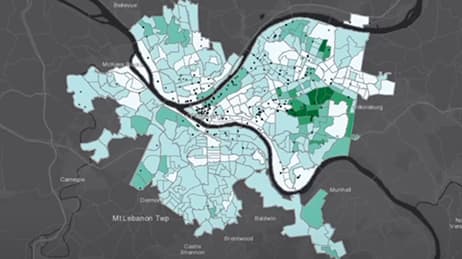

A tiling scheme determines certain properties of your cache, including which scale levels to create. Conversely, your organization may have already determined a tiling scheme to use when caching.

If you pick too many scales or pick scales that are unnecessary, you increase the cache creation time and required storage space. If you pick too few scales, users may feel that they are missing information or cannot get a good view of the map. The scale levels you choose are very important.A paper map is designed to look good at one scale, but a cached map has to be designed for every scale that you cache. The map needs to look good at each scale level before you cache it.
Arcgis 10.3 tutorials update#
Once the map is drawn, you can't change the way it looks unless you re-create or update the cache. When you cache a map, the server draws it at a set of scales that you select.
Arcgis 10.3 tutorials how to#
Arcgis 10.3 tutorials install#
For details on how to configure your ArcGIS Server site, see the Getting started after install section of this help system.Preparatory steps before you can connect to the server in ArcMap If you've just installed ArcGIS Server, you need to complete some This tutorial is meant as a practice so that you can prepare for future caching jobs within your organization. Finally, you'll test the cache in a client application. You'll then publish a map service, specifying that the cache should be built as soon as you publish.

This tutorial walks you through the process of planning and authoring a map that will be cached using the ArcGIS Online / Bing Maps / Google Maps tiling scheme. For example, you could create a cached map service from the basemap layers and a noncached map service from layers that get updated in real time or layers that change as a result of analysis or modeling.Ĭreating an effective map cache requires you to do some careful design and authoring work before you build the cache. You may find it helpful to make two maps and separate the layers that are appropriate for caching from layers that would not be feasible to cache. To achieve optimal performance, you should cache as many layers as you can. For maps that change only occasionally, tools are available to update the cache. When the server receives a request for a map, it's much quicker to return one of these cached images than to draw the map again.Ĭaching is appropriate for basemaps and maps that don't change often. When you cache a map service, the server draws the map at a set of scale levels that you define and saves the images. The best way to create fast map services is to cache them. Complexity: Intermediate Data Requirement: Use your own data Goal: Create a cached map service that can be consumed by client applications.


 0 kommentar(er)
0 kommentar(er)
